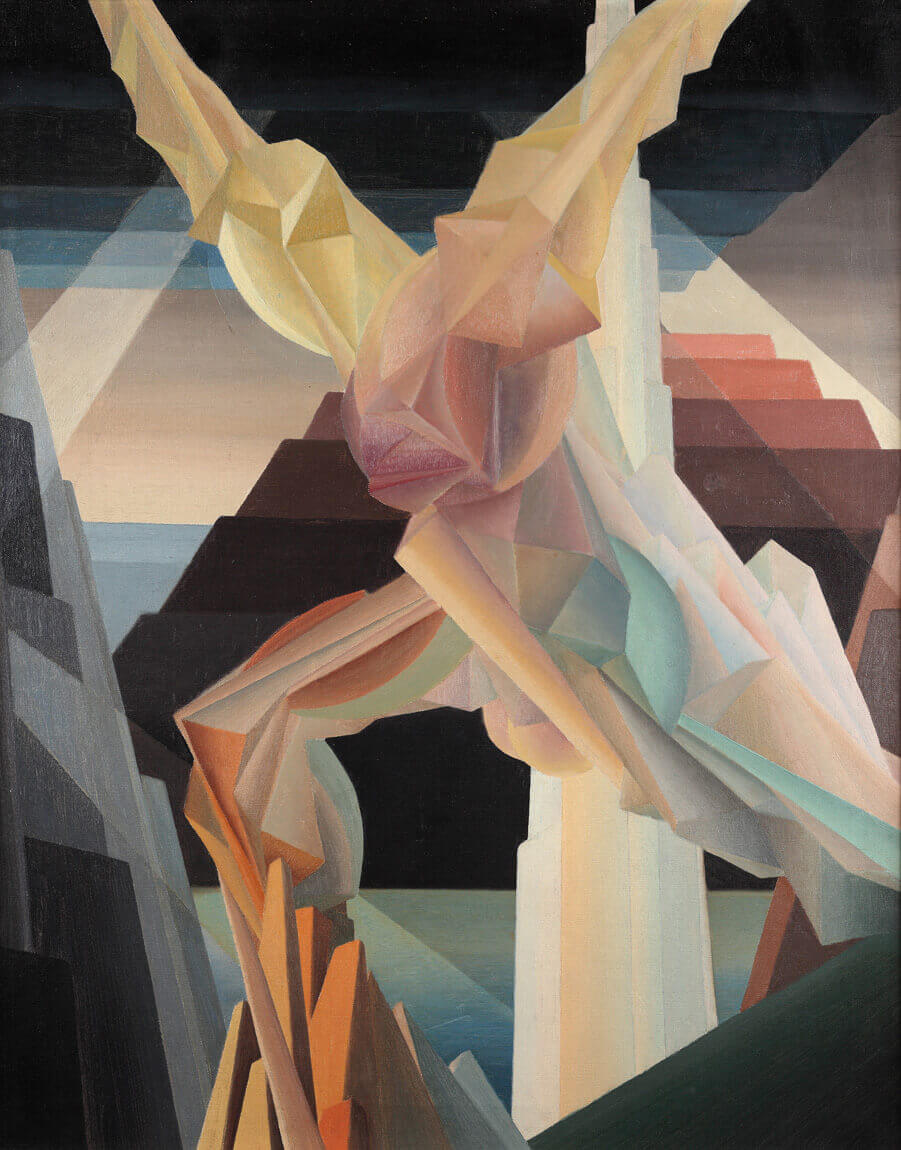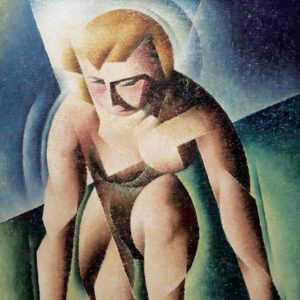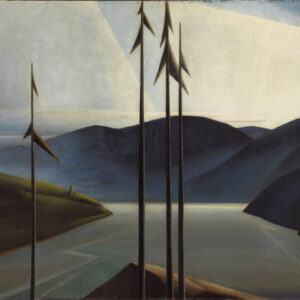Striving c.1930

Bertram Brooker, Striving, c.1930
Oil on canvas, 76.2 x 60.9 cm
Private collection
This incredibly vivid canvas is far removed from companion pieces made by Brooker during the same period, as in Sounds Assembling, 1928, and Alleluiah, 1929, because of the presence of the semi-human figure that hurls itself across the canvas in a robotic way, embodying the notion of striving, and demanding the viewer’s attention.


Placed in the foreground of the image, the humanoid has a ghostly presence. Its softer, circular forms contrast with the much more solid horizontal passages behind it. The result, like the earlier The Dawn of Man, 1927 (Brooker’s first use of a humanoid figure) dramatizes the struggle of a human being to achieve completeness. Dennis Reid has demonstrated that the figure in The Dawn of Man was influenced by the French sculptor Raymond Duchamp-Villon (1876–1918). He also points out that Brooker visited New York City regularly after he had settled in Toronto and that in January 1929 he visited the memorial exhibition of Duchamp-Villon at the Brummer Gallery there. Brooker’s friends Harold and Ruth Tovell owned a terracotta version of Duchamp-Villon’s Head of Baudelaire, 1911, which was clearly a model for the figure in Dawn. However the figure in Striving is substantially more vigorous and visually interesting than the placid one in the earlier painting.
The insertion of human-like figures into Striving and The Dawn of Man was a departure from earlier content, and not an entirely successful one. Roald Nasgaard even claims that these two canvases are not really very abstract at all: he characterizes them as showing “[in the] foreground streamlined humanoid figures bound in some rapt spiritualized relation to simplified landscapes that lay beyond.” Certainly in Striving the (somewhat) representational device is not perfectly integrated into what is primarily an abstract painting: the two styles seem discordant. In later work, the artist would meld the two modes of depicting reality more successfully.

 About the Author
About the Author
 More Online Art Books
More Online Art Books
 Acknowledgements
Acknowledgements